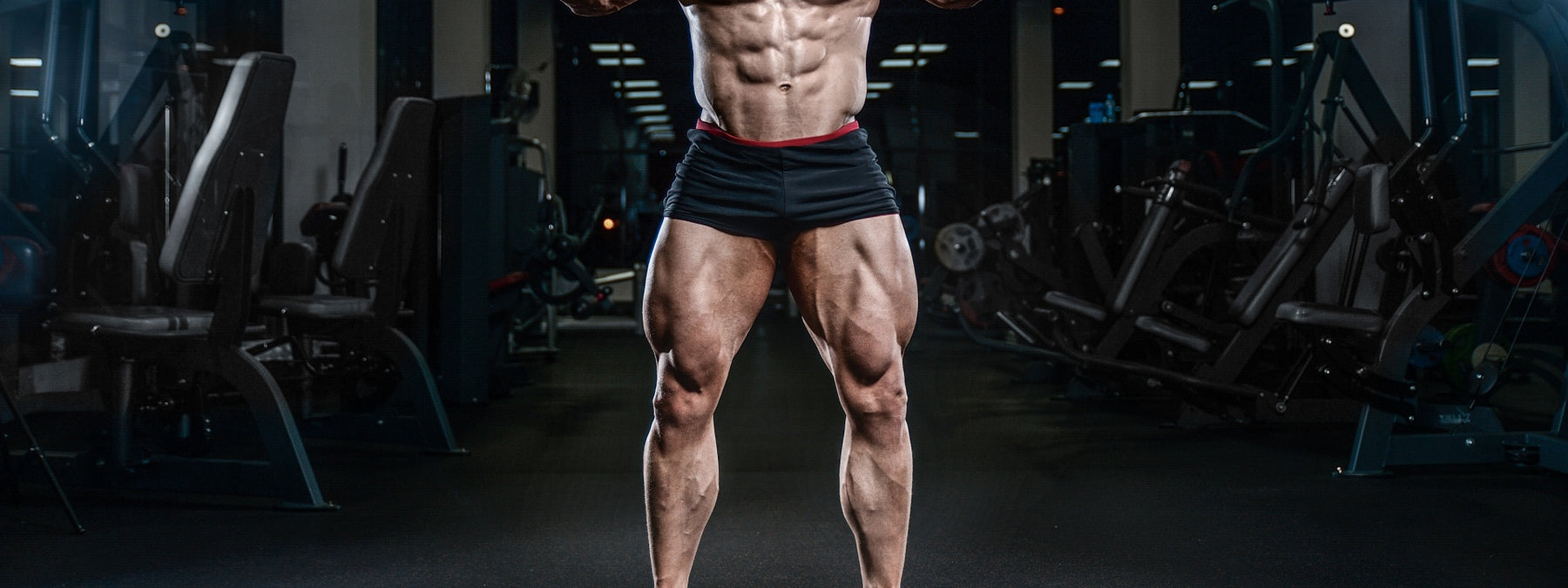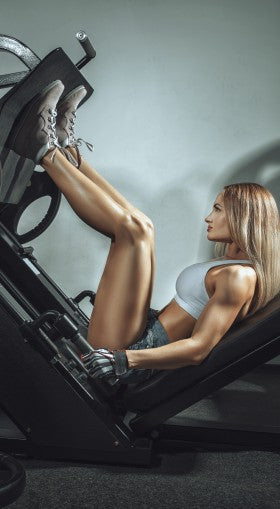
Advanced Quad Training - 5 Alternative Quadricep Exercises
Is your leg training like that interview - predictable without anything new or interesting? Does it go something like this: Squats, leg presses, leg extensions and possibly some hamstring work is thrown in at the end for good measure?
Related: The Quest for God-Like, Muscular Legs
I could go on and on about how you can improve on said plan and dissect squats and other aspects of leg training, but I want to instead present a few alternatives to the traditional quadriceps training mantra. it's not easy - it's not supposed to be, but that's the idea.
If your current quad routine has yielded little-to-no results and you need more "gains" as the kids say these days then set aside your "lift heavy by all means" mentality and accept a new challenge. These 5 alternative quad moves will prove anything but boring.

Move beyond squats and the leg press and evolve your training with these advanced quad building exercises.
5 Quad Exercises for Advanced Gains
#1 - Rear-Foot-Elevated Bulgarian Split Squat (banded)
you've most-likely heard of this exercise before. Also referred to as a single-legged squat by some the rear-foot-elevated version will have your quads, hams and glutes working overtime. Yes, it is an overall upper leg builder but with just a tweak or two, you can shift most of the focus on your quads.
Why a single-legged (unilateral) movement? It will instantly expose which side is weaker which will translate into more focus on bringing up that side so you can more effectively increase strength and size during two-legged (bilateral) exercises. The elevated rear foot will cause you to put a maximum amount of stress on the working leg.
The How: Set a bench behind you and grab a pair of dumbbells or place a moderate-weighted barbell on your back. Place your right foot on the bench behind you and firmly plant your forward foot flat on the ground.
Descend your rear knee toward the floor until it either lightly touches or just before it touches the floor. Drive with your front leg back up until just before you lock your knee. Switch legs and repeat.
To place a bit more stress on your quad bring your forward foot a bit closer to the bench. For an even tougher challenge try the split squat with a band fixed around both ends of a barbell and the middle of the band under your forward foot. This linear variable resistance will challenge your balance, strength and ego.
#2 - Pistol Squat
As another unilateral quad builder, the pistol squat may be as challenging as they come. Unlike the rear-foot-elevated Bulgarian split squat you will have no bench or any other structure to help with balance. Of course, there are ways to progress with the pistol squat the key is to never get comfortable.
You most-likely will find that you will become increasingly motivated to progress and finally achieve a true free-standing pistol squat. What's the big deal? This type of squat has all the components of strength, balance, range of motion and control.
The How: To start, stand next to a bench and raise one leg out in front of you as straight as you can. Descend with the other leg until the raised leg and glute touches the bench then press back up. Think of it as a single-legged box squat. Once you are proficient there, if possible, switch to a lower box/bench.
You will eventually progress to the free-standing version. Be sure to drive through your heel and keep your back straight with your head looking straight ahead. The last step is to perform the pistol squat with a kettlebell or dumbbell held with a goblet grip to add resistance.
#3 - Angled Single-Leg Press
Now, before you stop reading because the term leg press was mentioned hear me out. I believe most, if not, all machines can have some validity. Besides, we are all not built the same.
We have different limb lengths, joint mobility, and likes and dislikes so what may work for one guy/girl may not work for another. Keeping with the unilateral theme so far, the angled single leg press will stimulate, isolate and annihilate your quads in a very unique way.
The How: Load a leg press/sled with a light amount of weight - nowhere close to what you would use for normal, bilateral leg presses. Sit in the seat at an angle with one leg on the plate and the other on the pad. You should be sitting slightly on your side and your foot should be around 45 degrees on the leg press plate.
With your knee in line with your foot lower the sled until around a 90-degree angle is achieved at your knee. Press back up without locking your knee, switch legs and repeat for the other side.
#4 - Deficit Sumo Squat/Deadlift
Squats come in all shapes and sizes and you may be built for some and not so much for others. Whether it's back strain, hip strain, knee pain or a combination of all there is still hope for you when it comes to including some form of squat in your program. The sumo squat/deadlift fits nicely as an alternative to back and front squats.
By having the weight placed more centered regarding gravity will allow you to more effectively use your hip and leg strength to drive the weight up. But, the problem sometimes becomes the range of motion or lack there if. We can fix that.
The How: Place two sets of plates or low boxes on either side of where you will perform squats. Grasp a heavy kettlebell or dumbbell on one end and place a foot on each box/stack of plates. While leading your knees in line with your toes lower your body with the weight hanging between your legs and below foot level.
The added height will add deficit to your range of motion and allow you to sink lower than where your feet are stationed. With the same form and function press back up keeping your knees in line with your toes. As with all leg exercises, avoid locking your knees at the top of the movement.
#5 - Overhead Squat
Okay, here's another exercise you might turn your nose up to. You may think, "That's for those Crossfit types." Well, yes and no.Yes, many in the Crossfit community overhead squat on a regular basis and tout the benefits of doing such a functional exercise. But, no, it isn't just reserved for Crossfitters. You have plenty to gain and benefit from performing such an exercise.
Challenging? Yes. Impossible? No. If you've been lifting bodybuilding or traditional strength training style for quite some time you may need to increase shoulder mobility and balance first.
The How: If you are a newbie to this exercise you will need to start with a wooden pole or empty bar at best since it will take some practice to nail down form and technique. Get into a normal squat stance: feet a bit wider than your shoulders with your feet turned slightly out.
Raise the bar or pole overhead with a wide grip and your elbows locked. The bar/pole should be slightly behind the line of your head. With complete control of the bar lower into a full-range squat and then press back up.
The overhead bar should be fixed in the up position the entire time. As stated earlier, you may need to considerably improve your shoulder mobility in order to properly perform this exercise.
